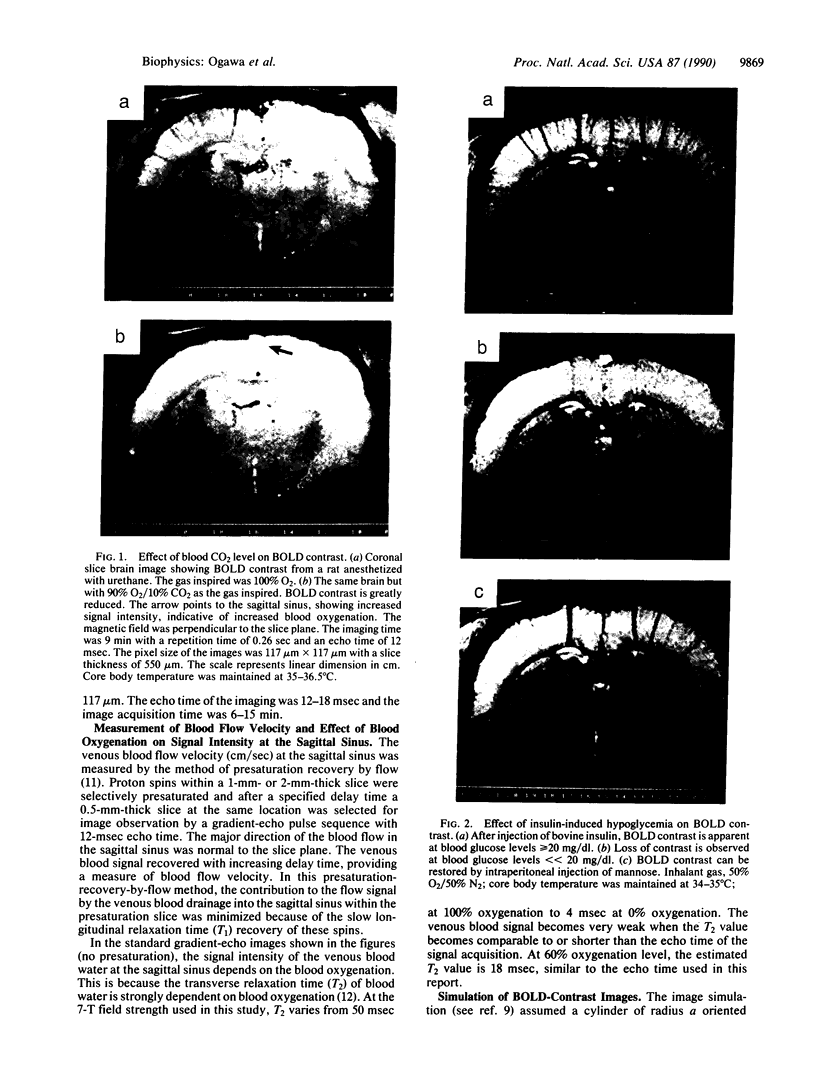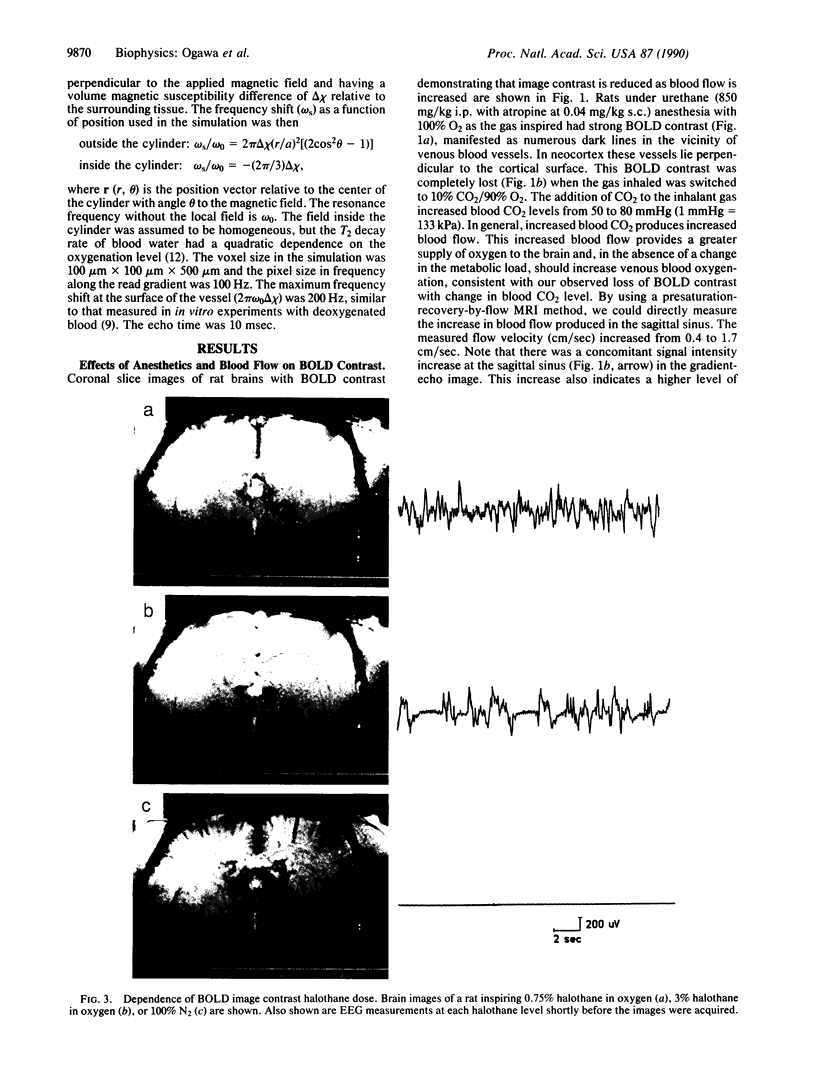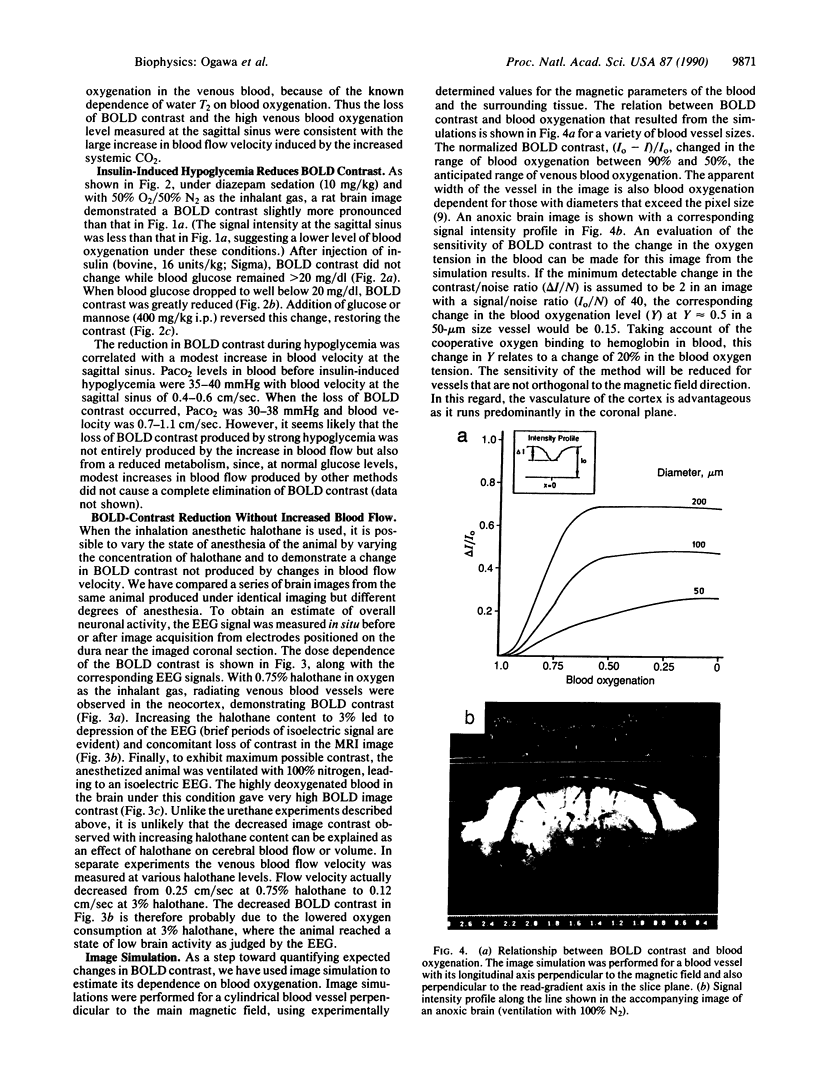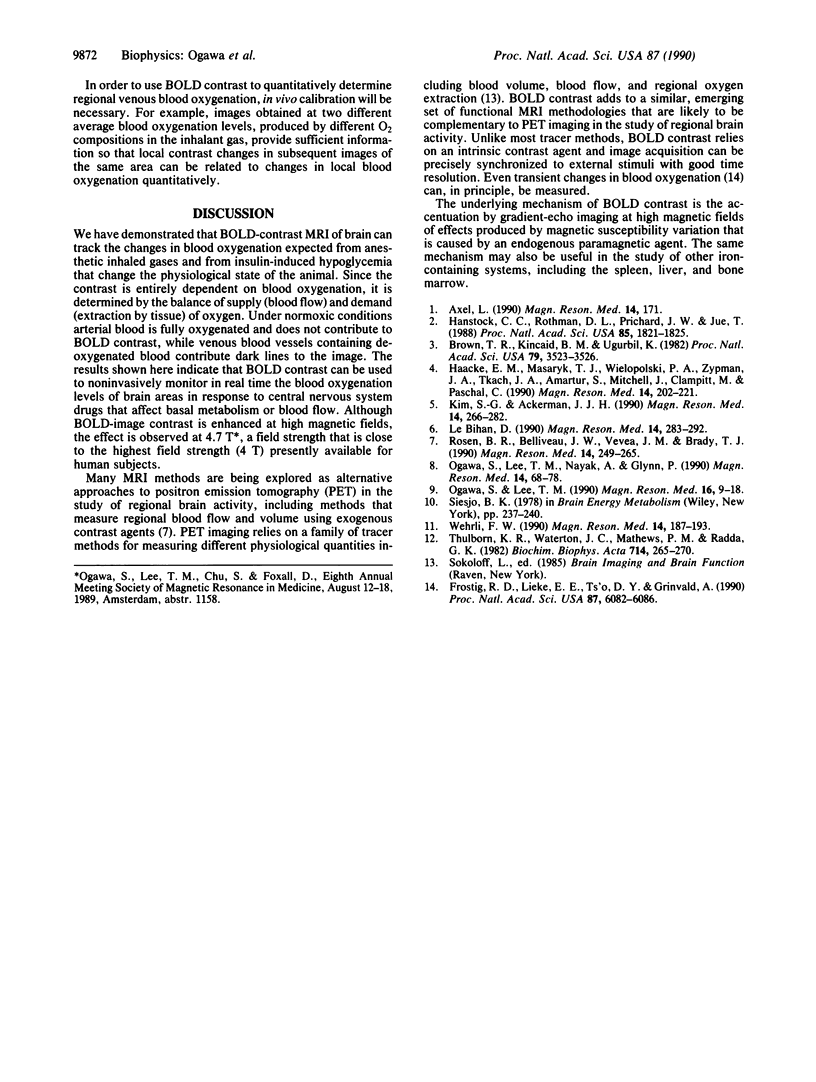Abstract
Paramagnetic deoxyhemoglobin in venous blood is a naturally occurring contrast agent for magnetic resonance imaging (MRI). By accentuating the effects of this agent through the use of gradient-echo techniques in high fields, we demonstrate in vivo images of brain microvasculature with image contrast reflecting the blood oxygen level. This blood oxygenation level-dependent (BOLD) contrast follows blood oxygen changes induced by anesthetics, by insulin-induced hypoglycemia, and by inhaled gas mixtures that alter metabolic demand or blood flow. The results suggest that BOLD contrast can be used to provide in vivo real-time maps of blood oxygenation in the brain under normal physiological conditions. BOLD contrast adds an additional feature to magnetic resonance imaging and complements other techniques that are attempting to provide positron emission tomography-like measurements related to regional neural activity.
Full text
PDF




Images in this article
Selected References
These references are in PubMed. This may not be the complete list of references from this article.
- Brown T. R., Kincaid B. M., Ugurbil K. NMR chemical shift imaging in three dimensions. Proc Natl Acad Sci U S A. 1982 Jun;79(11):3523–3526. doi: 10.1073/pnas.79.11.3523. [DOI] [PMC free article] [PubMed] [Google Scholar]
- Frostig R. D., Lieke E. E., Ts'o D. Y., Grinvald A. Cortical functional architecture and local coupling between neuronal activity and the microcirculation revealed by in vivo high-resolution optical imaging of intrinsic signals. Proc Natl Acad Sci U S A. 1990 Aug;87(16):6082–6086. doi: 10.1073/pnas.87.16.6082. [DOI] [PMC free article] [PubMed] [Google Scholar]
- Haacke E. M., Masaryk T. J., Wielopolski P. A., Zypman F. R., Tkach J. A., Amartur S., Mitchell J., Clampitt M., Paschal C. Optimizing blood vessel contrast in fast three-dimensional MRI. Magn Reson Med. 1990 May;14(2):202–221. doi: 10.1002/mrm.1910140207. [DOI] [PubMed] [Google Scholar]
- Hanstock C. C., Rothman D. L., Prichard J. W., Jue T., Shulman R. G. Spatially localized 1H NMR spectra of metabolites in the human brain. Proc Natl Acad Sci U S A. 1988 Mar;85(6):1821–1825. doi: 10.1073/pnas.85.6.1821. [DOI] [PMC free article] [PubMed] [Google Scholar]
- Kim S. G., Ackerman J. J. Quantification of regional blood flow by monitoring of exogenous tracer via nuclear magnetic resonance spectroscopy. Magn Reson Med. 1990 May;14(2):266–282. doi: 10.1002/mrm.1910140212. [DOI] [PubMed] [Google Scholar]
- Le Bihan D. Magnetic resonance imaging of perfusion. Magn Reson Med. 1990 May;14(2):283–292. doi: 10.1002/mrm.1910140213. [DOI] [PubMed] [Google Scholar]
- Ogawa S., Lee T. M. Magnetic resonance imaging of blood vessels at high fields: in vivo and in vitro measurements and image simulation. Magn Reson Med. 1990 Oct;16(1):9–18. doi: 10.1002/mrm.1910160103. [DOI] [PubMed] [Google Scholar]
- Ogawa S., Lee T. M., Nayak A. S., Glynn P. Oxygenation-sensitive contrast in magnetic resonance image of rodent brain at high magnetic fields. Magn Reson Med. 1990 Apr;14(1):68–78. doi: 10.1002/mrm.1910140108. [DOI] [PubMed] [Google Scholar]
- Rosen B. R., Belliveau J. W., Vevea J. M., Brady T. J. Perfusion imaging with NMR contrast agents. Magn Reson Med. 1990 May;14(2):249–265. doi: 10.1002/mrm.1910140211. [DOI] [PubMed] [Google Scholar]
- SMRM Workshop on Magnetic Resonance Imaging of Blood Flow. March 13-14, 1989, Philadelphia, Pennsylvania. Magn Reson Med. 1990 May;14(2):171–320. [PubMed] [Google Scholar]
- Thulborn K. R., Waterton J. C., Matthews P. M., Radda G. K. Oxygenation dependence of the transverse relaxation time of water protons in whole blood at high field. Biochim Biophys Acta. 1982 Feb 2;714(2):265–270. doi: 10.1016/0304-4165(82)90333-6. [DOI] [PubMed] [Google Scholar]
- Wehrli F. W. Time-of-flight effects in MR imaging of flow. Magn Reson Med. 1990 May;14(2):187–193. doi: 10.1002/mrm.1910140205. [DOI] [PubMed] [Google Scholar]











